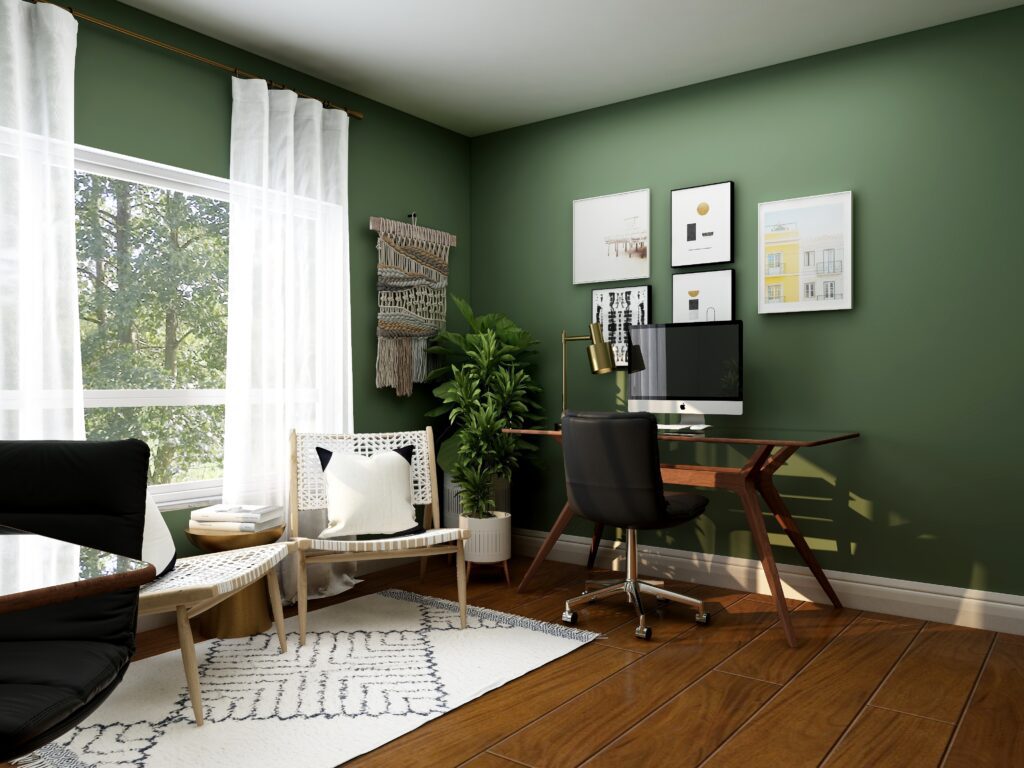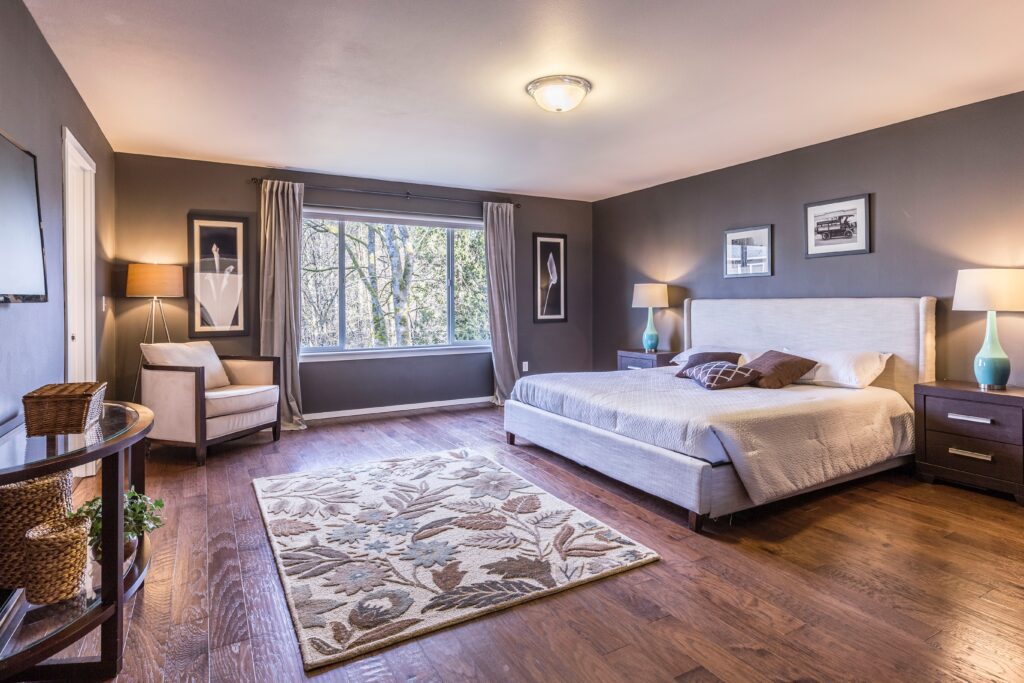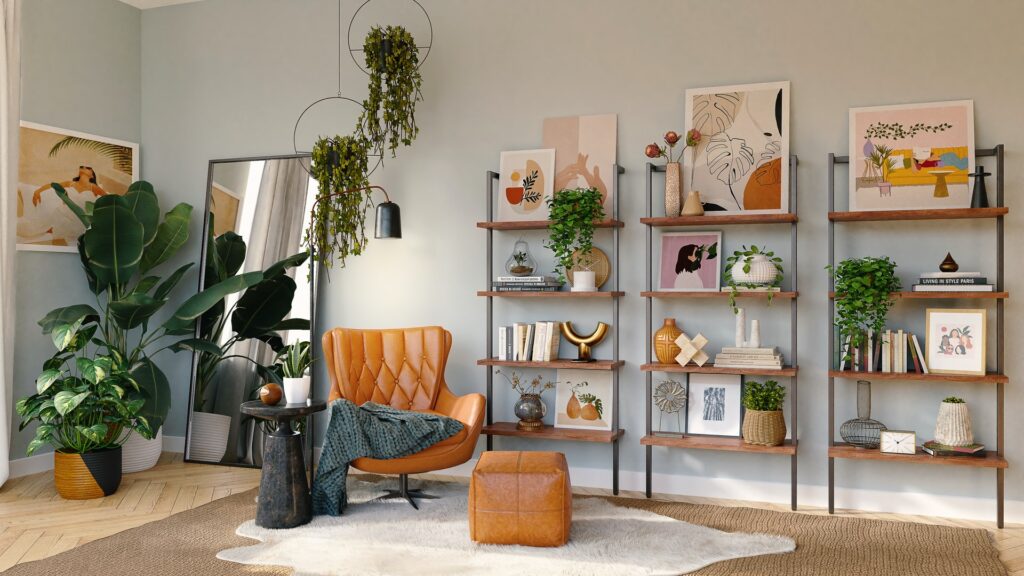
Moving into a new home marks the beginning of an exciting chapter in life, but it also comes with its fair share of financial responsibilities. One significant aspect that often catches people off guard is the cost of furnishing the house. Whether transitioning from a small apartment to a spacious home or relocating to a new city, budgeting for furniture is crucial in moving.
Understanding the expenses of furnishing a home is essential for effective financial planning. From the size of your new abode to the quality of furnishings you desire, various factors come into play when determining the overall cost. This comprehensive guide delves into the intricacies of budgeting for home furnishings, exploring average costs, factors influencing pricing, money-saving tips, and additional considerations to help you create a personalized and comfortable living space without breaking the bank. So, let’s dive in and uncover everything you need to know about furnishing your home within budget.

Average Cost to Furnish a Home
When embarking on furnishing your new home, it’s crucial to understand the average costs involved clearly. According to industry insights, the national average cost to furnish a house hovers around $16,000. However, this figure can vary significantly depending on several factors, including the size of the home, location, and desired level of furnishings.
For those dwelling in smaller spaces like studios or one-bedroom apartments, the average cost tends to fall on the lower end of the spectrum, ranging from $3,500 to approximately $10,000. Conversely, larger homes with three or four bedrooms adorned with luxury furnishings may incur expenses nearing or exceeding $100,000.
The cost of furnishing a home is not solely determined by the quality of furnishings but also encompasses additional factors contributing to the overall expenses. These factors include room size and layout, furniture quality, delivery, and assembly expenses. As such, it’s essential to delve deeper into these aspects to understand the financial implications of furnishing a home.
Factors That Affect the Cost of Home Furnishings
When embarking on the journey of furnishing your home, several key factors come into play, influencing both the overall cost and the outcome of your design efforts. Room size and layout are fundamental considerations, as larger rooms often demand more furniture to achieve a balanced look and feel—architectural nuances like windows and wall angles further shape furniture placement and selection. Additionally, the quality of furniture you opt for significantly impacts your budget and the longevity of your investment. While top-tier pieces promise durability, more budget-friendly options can offer a practical compromise for temporary living spaces. Delivery and assembly costs also warrant careful consideration, with fees varying based on distance and service level. Navigating these factors enables you to craft a furnished home that seamlessly blends style, comfort, and affordability.
- Room Size and Layout: The size and layout of each room in your home play a significant role in determining the cost of furnishing. Larger rooms typically require more furniture to fill the space adequately. Additionally, factors such as the number of windows, angles of walls, and specific architectural features can impact furniture placement and the quantity of items needed to create a cohesive and comfortable environment.
- Furniture Quality: The quality of furniture you choose dramatically influences the overall cost of furnishing your home. While top-quality pieces may come with a higher price tag, they often offer durability and longevity, making them a worthwhile investment for those planning to stay in their home for an extended period. However, if you’re furnishing a temporary space or have budget constraints, opting for more budget-friendly options can help balance cost and quality.
- Delivery Costs: Furniture delivery fees can significantly add to the total cost of furnishing your home, particularly for oversized items such as mattresses, bed frames, and sofas. It’s essential to factor in these delivery costs when budgeting for home furnishings, as they can vary depending on the supplier, distance, and delivery method. Some retailers may offer free or discounted delivery for large purchases, while others may charge additional fees based on the delivery location or service level.
- Assembly Costs: While some furniture items come with straightforward instructions for DIY assembly, others may require professional installation or assembly services. Hiring a local handyperson or utilizing the assembly services offered by furniture retailers can incur additional costs. Consider the complexity of assembly required for each item and whether it’s worth investing in professional assistance to ensure proper installation and functionality.
By carefully considering these factors, you can make informed decisions when budgeting for home furnishings and create a comfortable and stylish living space that meets your needs and preferences within your desired budget constraints.

Tips for Saving Money on Home Furnishings
Creating a well-furnished home that reflects your style and personality doesn’t have to break the bank. By adopting a phased approach to design, you can prioritize essential purchases and avoid overspending. Begin with fundamental pieces in phase one, such as beds, couches, and tables, before gradually adding design elements like rugs and curtains in phase two. Phase three allows for adding decorative accents and knick-knacks to complete the look. Furthermore, hunting for deals and bargains can yield significant savings on furniture purchases. Watch for clearance sales, seasonal promotions, and special offers from online and offline retailers. Mixing high and low-end pieces also allows for a curated and stylish interior while staying within budget constraints.
Consider waiting for sales events and shopping holidays to maximize discounts and savings. For those furnishing temporary spaces or planning to relocate, renting furniture can provide a cost-effective solution without the long-term financial commitment. With these money-saving strategies, you can furnish your home affordably while creating a comfortable and inviting living space.
- Phased Approach to Design: Divide your furnishing purchases into phases to prioritize essential items and avoid overspending. Start with phase one, which includes fundamental pieces such as beds, couches, tables, and chairs. Then, gradually move on to phase two for design elements like rugs, curtains, and throws, followed by phase three for decorative accents and knick-knacks. This organized approach allows you to allocate your budget effectively and make purchases as your finances allow, preventing unnecessary splurges.
- Hunt for Deals and Bargains: Take advantage of sales, discounts, and bargains offered by various retailers, both online and offline. Look for clearance sales, seasonal promotions, and special offers to score significant savings on furniture purchases. Additionally, consider shopping at flea markets, thrift stores, and online marketplaces for unique finds and discounted items that fit your budget without compromising style or quality.
- Mix High and Low-End Pieces: Strike a balance between high-end and budget-friendly furniture pieces to create a curated and stylish interior while staying within your budget. Invest in durable and timeless pieces for essential items like sofas and beds while opting for more affordable decorative accents and accessories. Mixing high and low-end pieces allows you to achieve a sophisticated look without breaking the bank.
- Wait for Sales and Discounts: Patience can pay off when it comes to furniture shopping. Watch for sales events and promotional offers from your favorite retailers, and consider waiting for major shopping holidays like Black Friday, Cyber Monday, and end-of-season clearance sales to snag the best deals. You can take advantage of significant discounts and savings on home furnishings by timing your purchases strategically.
- Consider Renting Furniture: Explore renting furniture, especially if you’re furnishing a temporary space or planning to relocate soon. Rental furniture services like Cort and Feather offer flexible rental options for fully furnished rooms or individual items, allowing you to furnish your home without committing to expensive purchases. Renting furniture can be a cost-effective solution for short-term needs or transitional periods, providing flexibility and convenience without the long-term financial commitment.
By implementing these money-saving tips and strategies, you can furnish your home stylishly and affordably while staying within budget constraints. With careful planning and savvy shopping, you can create a comfortable and inviting living space without breaking the bank.

Additional Considerations When Furnishing a Home
When furnishing your home, several additional factors beyond cost can significantly impact your decisions and overall experience. Time constraints necessitate professional assistance from interior designers or furniture experts, who can streamline the process and recommend quick-ship programs. Additionally, deciding whether to rent or purchase furniture requires careful consideration of your long-term plans and financial situation. Understanding return policies and warranty coverage is crucial to safeguarding your investment, while prioritizing future flexibility and adaptability ensures that your furniture choices can accommodate changing needs over time. Finally, personalization and individual preferences play a vital role in creating a space that truly feels like home, so take notice of the importance of selecting pieces that resonate with your unique style and personality. Considering these factors, you can create a functional, stylish, and personalized living space that enhances your quality of life and reflects your individuality.
- Time Constraints and Professional Assistance: If time is a limiting factor and you need to furnish your home quickly, consider seeking professional assistance from interior designers or furniture experts. Design professionals can provide valuable insights, recommend quick-ship programs, and help you streamline the furnishing process to meet tight deadlines. They can also assist in sourcing furniture from trade-only suppliers or local retailers, ensuring a hassle-free and efficient experience.
- Rental vs. Purchase Decision: Carefully evaluate your long-term plans and financial situation before buying or renting furniture. Renting furniture can be a convenient option for short-term needs or transitional periods, offering flexibility and convenience without the commitment of permanent ownership. However, if you anticipate staying in your home for an extended period, purchasing furniture may be a more cost-effective investment in the long run. Consider the pros and cons of each option and choose the one that best aligns with your lifestyle and budgetary considerations.
- Return Policies and Warranty Coverage: When purchasing furniture, consider the retailer’s return policies and warranty coverage to safeguard your investment. Ensure you understand the terms and conditions regarding returns, exchanges, and refunds if the furniture does not meet your expectations or requires repair. Additionally, inquire about warranty coverage for manufacturing defects or damages to protect you against unforeseen issues arising after purchase.
- Future Flexibility and Adaptability: Anticipate future changes in your living situation and consider the flexibility and adaptability of your furniture choices. Choose versatile pieces that can easily transition between rooms or accommodate evolving needs over time. Modular furniture, convertible designs, and multifunctional pieces are excellent options for maximizing space and functionality while allowing for future adjustments and modifications.
- Personalization and Individual Preferences: Pay attention to the importance of personalization and individual preferences when furnishing your home. Your home should reflect your unique style, tastes, and personality, so prioritize selecting furniture and decor that resonate with you. Incorporate elements that evoke joy, comfort, and a sense of belonging, whether it’s through color schemes, textures, or decorative accents. Remember that your home reflects who you are, so make choices that resonate with your lifestyle and bring you happiness.
By considering these additional factors and taking a thoughtful approach to furnishing your home, you can create a functional, stylish, and personalized living space that meets your needs and enhances your quality of life. Whether furnishing a new home from scratch or updating your existing space, carefully planning and considering these factors will ensure a successful and rewarding furnishing experience.

Conclusion
Furnishing a home is a significant undertaking that requires careful planning, budgeting, and consideration of various factors. From the size and layout of your rooms to your personal style preferences and financial constraints, there are many elements to consider when outfitting your living space.
Understanding the average costs associated with furnishing a home and the factors influencing these costs is essential for creating a realistic budget and making informed purchasing decisions. You can develop a comprehensive budget that aligns with your needs and priorities by considering room size, furniture quality, delivery, and assembly costs.
Moreover, implementing practical strategies for saving money on home furnishings, such as strategically shopping, prioritizing essential items, and exploring rental options, can help you stretch your budget further without compromising quality or style. Additionally, seeking professional assistance and being mindful of return policies and warranty coverage can ensure a smooth and successful furnishing process.
Ultimately, furnishing your home is an opportunity to express your personality, enhance your comfort, and create a space that truly feels like home. By carefully considering your individual preferences, future flexibility, and long-term goals, you can curate a living environment that reflects your unique lifestyle and brings you joy for years to come.
With proper planning, thoughtful decision-making, and a bit of creativity, furnishing your home can be a rewarding and fulfilling experience. Whether embarking on a new home furnishing project or updating your existing space, enjoy the process and take pride in creating a home that truly reflects who you are.